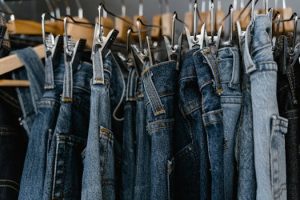PFAS-Free Fashion: Why “Forever Chemicals” Are Banned in 2025
As the fashion industry grapples with the environmental and social impacts of its practices, a new concern has risen to the forefront: PFAS-free fashion. PFAS, or per- and polyfluoroalkyl substances, are a group of chemicals commonly used in the production of clothing and other consumer goods. But these “forever chemicals” have been linked to a range of health and environmental issues, prompting countries around the world to ban their use in various industries. In 2025, the fashion industry will join the fight against PFAS by implementing a ban on these harmful chemicals. In this article, we’ll explore why PFAS-free fashion is necessary and what this ban means for the future of the industry.
The Problem with PFAS
PFAS are a family of thousands of synthetic chemicals that have been used in a variety of products since the 1950s. Their widespread use is due to their ability to repel water and oil, making them ideal for use in fabrics, carpets, and other consumer goods. However, these chemicals are known as “forever chemicals” because they do not break down in the environment and can accumulate in living organisms. This persistence in the environment has led to widespread contamination of water, soil, and air, leading to health concerns for humans and wildlife.
Health Effects
PFAS exposure has been linked to a range of health issues, including kidney and testicular cancer, reproductive and developmental problems, and immune system dysfunction. These chemicals can also affect hormone levels and may contribute to obesity. In addition, PFAS have been found in breast milk, putting infants at risk for exposure. The long-term effects of PFAS exposure are still being studied, but the existing research is concerning enough to warrant action.
Environmental Impact
Persistence in the environment is not the only issue with PFAS. These chemicals have also been found to impact ecosystems and wildlife. For example, PFAS have been linked to developmental abnormalities in fish and other aquatic animals. They can also accumulate in the food chain, leading to potential harm for animals and humans who consume contaminated plants and animals. Additionally, PFAS contribute to microplastic pollution when they shed from clothing during washing and end up in our oceans and rivers.
The Fashion Industry Takes Action
The fashion industry is known for its high levels of waste and pollution, and the use of PFAS is just another way in which it contributes to environmental and health concerns. However, in recent years, several brands and retailers have taken steps to address the issue of PFAS in their products. In 2018, outdoor brand Patagonia announced that it would no longer use PFAS in its waterproof gear. Other companies, such as C&A and H&M, have also committed to phasing out PFAS in their products.
North America Bans PFAS
The issue of PFAS in consumer products has gained attention from governments around the world, with some taking action to ban its use. In 2019, the state of Washington became the first in the US to ban PFAS in paper food packaging. In 2020, Canada announced a ban on PFAS in most products, including textiles. And just recently, the United States passed the PFAS Act, which would phase out the use of these chemicals in consumer products by 2024. These actions are significant steps towards addressing the issue of PFAS and its impact on human health and the environment.
The 2025 Ban on PFAS in Fashion
In 2019, the Danish Fashion Institute launched the “Fashion Pact,” a global sustainability initiative that aimed to make the fashion industry more sustainable. One of the key pillars of this pact is a ban on PFAS in fashion by 2025. This commitment has since been signed by over 60 brands, including major players such as Adidas, H&M, and Zara.
The Road Ahead
The ban on PFAS in fashion will undoubtedly have a significant impact on the industry. It will require manufacturers to find alternative solutions for water and stain-resistant fabrics and coatings, which may be challenging but necessary steps towards a cleaner and safer fashion industry. The phasing out of PFAS will also require transparency and monitoring to ensure compliance and prevent companies from simply switching to new, potentially harmful chemicals. The fashion industry has a long way to go in its journey towards sustainability, and the PFAS ban is just one step in the right direction.
Conclusion
Persisting in the environment for decades, PFAS have become a major concern for human health and the environment. In 2025, the fashion industry will play its part in addressing the issue by implementing a ban on PFAS in its products. This ban will not only protect the health of consumers and the environment but also act as a significant step towards making the fashion industry more sustainable. As consumers, we must continue to demand transparency and sustainability from our fashion choices to create a cleaner and safer world for future generations.




